10 strange Mercury facts
Our solar system's innermost planet is pretty weird.
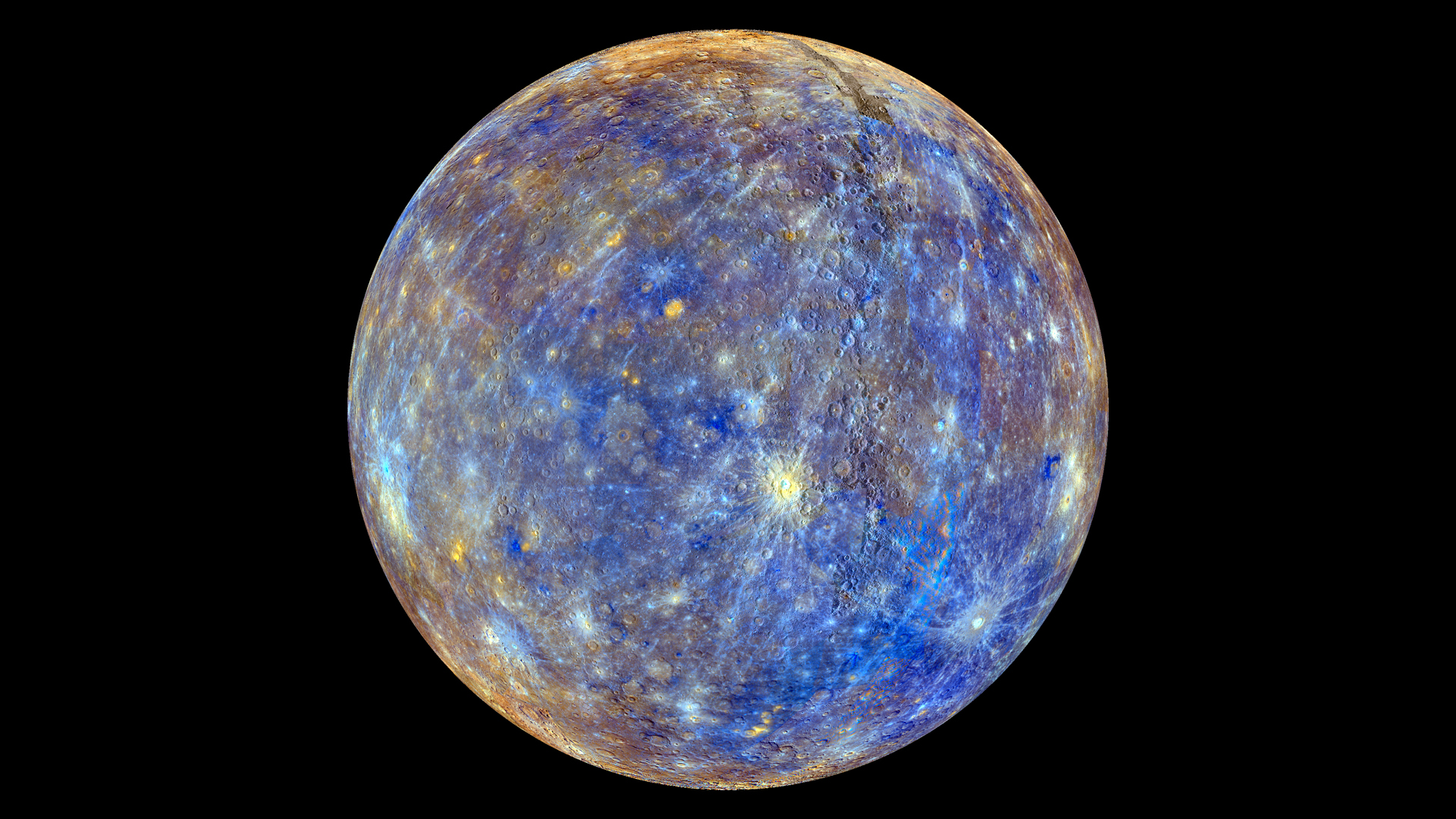
- Largest temperature fluctuations in the solar system
- The smallest planet in the solar system
- Giant asteroid impact survivor
- A bizarre orbit
- Surface ice located near poles
- Enormous iron core
- Its entire surface has been mapped
- The thinnest atmosphere in the solar system
- Weird 'tails'
- Magnetic tornadoes
Mercury, the closest planet to the sun, is only slightly larger than Earth's moon and is pockmarked with craters.
The planet is visible to the unaided eye and as such as has long been known to humans. According to Universe Today, the Sumerians mentioned the planet as early as the 2nd millennium BC (a period spanning 2000 BC to 1001 BC), and the Babylonians called it the planet Nabu. We know it by the name given by the Romans, after their swift-footed messenger god Mercury. The planet was first observed through the newly invented telescope in 1631 by astronomers Galileo Galilei and Thomas Harriot, according to NASA Science.
Since its first visit from NASA's Mariner 10 spacecraft in 1974, the little planet has intrigued scientists. It will no doubt continue to surprise us, especially after the joint European Space Agency (ESA) and Japan Aerospace Exploration Agency (JAXA) mission BepiColombo arrives at the small planet in late 2025.
Here we explore 10 strange facts about the planet Mercury.
Related: Sounds in space: What noises do planets make?
Largest temperature fluctuations in the solar system
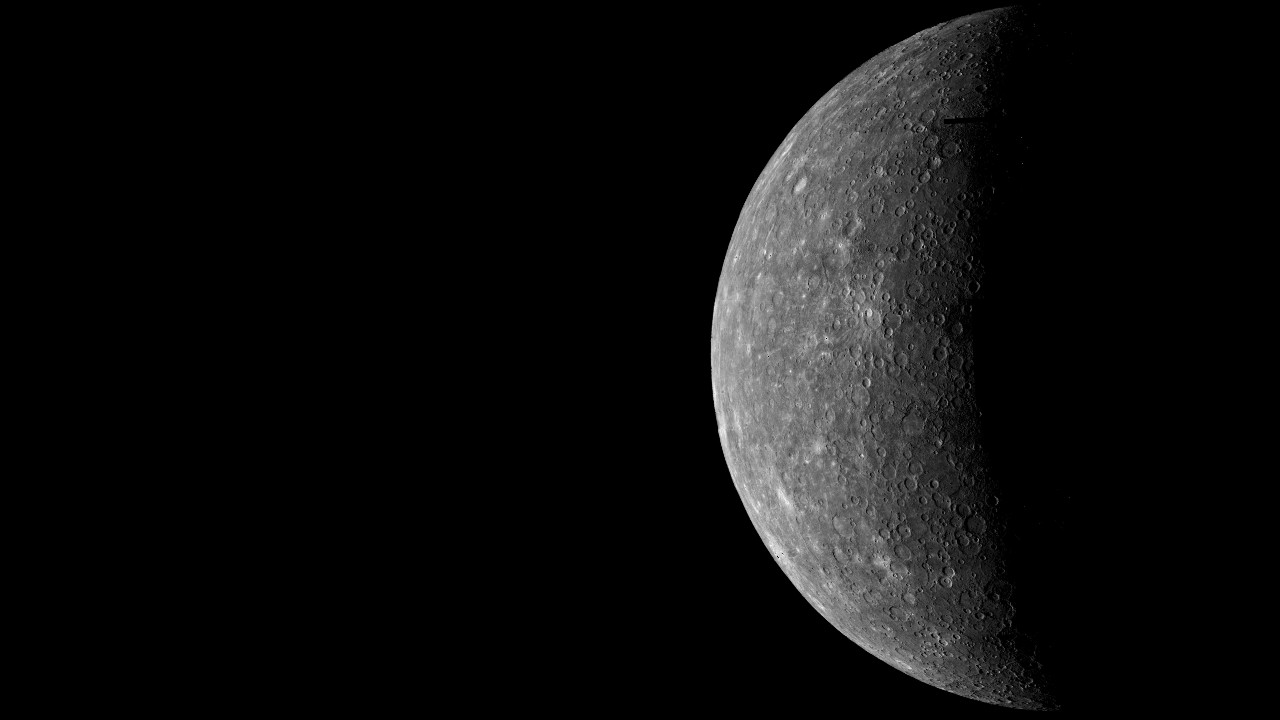
Even though Mercury is the closest planet to the sun, its surface can still be extremely cold, thanks to its lack of a heat-trapping atmosphere. The temperature during the day can reach a scorching 800 degrees Fahrenheit (430 degrees Celsius), but at night, temperatures can plummet as low as minus 290 F (minus 180 C), according to NASA. That fluctuation equals a temperature swing of about 1,100 F (600 C), the largest of any planet in the solar system.
The smallest planet in the solar system
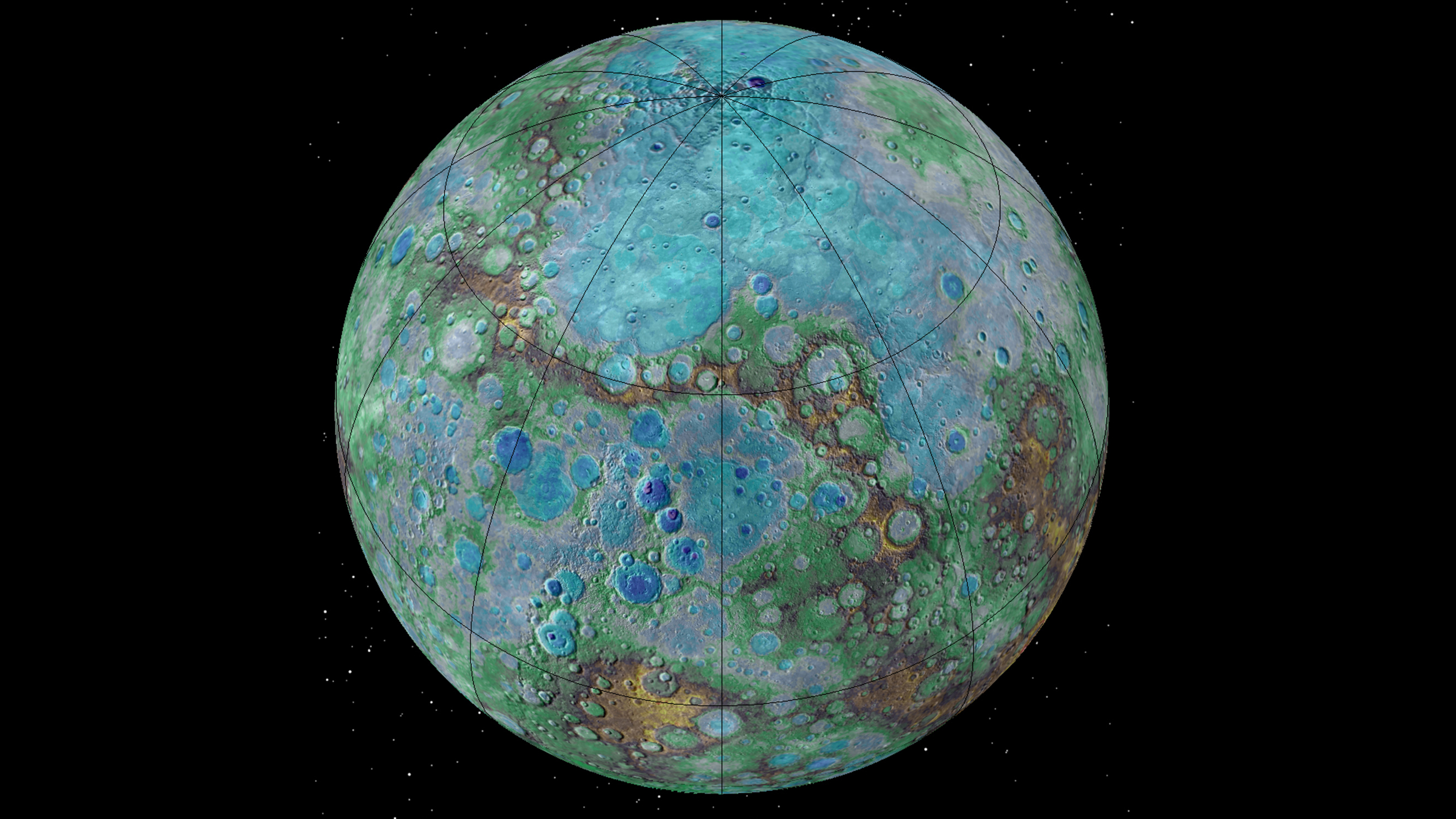
Mercury is the smallest planet in the solar system. The dinky planet is approximately 3,030 miles (4,876 kilometers) in diameter, making it about as wide as the continental United States and only slightly bigger than Earth's moon.
Saturn's moon Titan and Jupiter's moon Ganymede are both larger than Mercury. Pluto was long considered to be the smallest planet in the solar system, but after it was reclassified as a dwarf planet in 2006, the award of the smallest planet has been bestowed upon Mercury.
Giant asteroid impact survivor
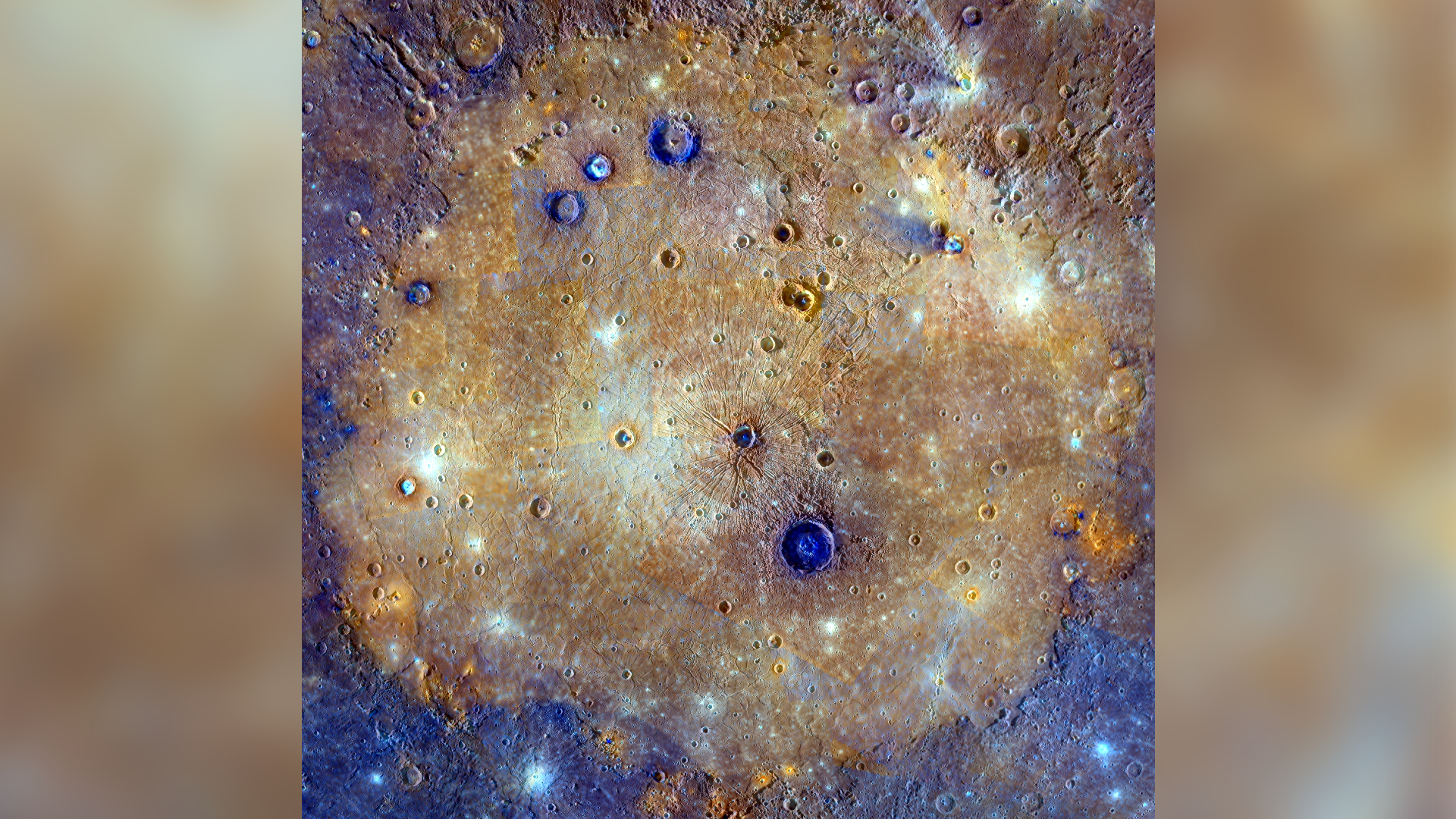
A bizarre orbit
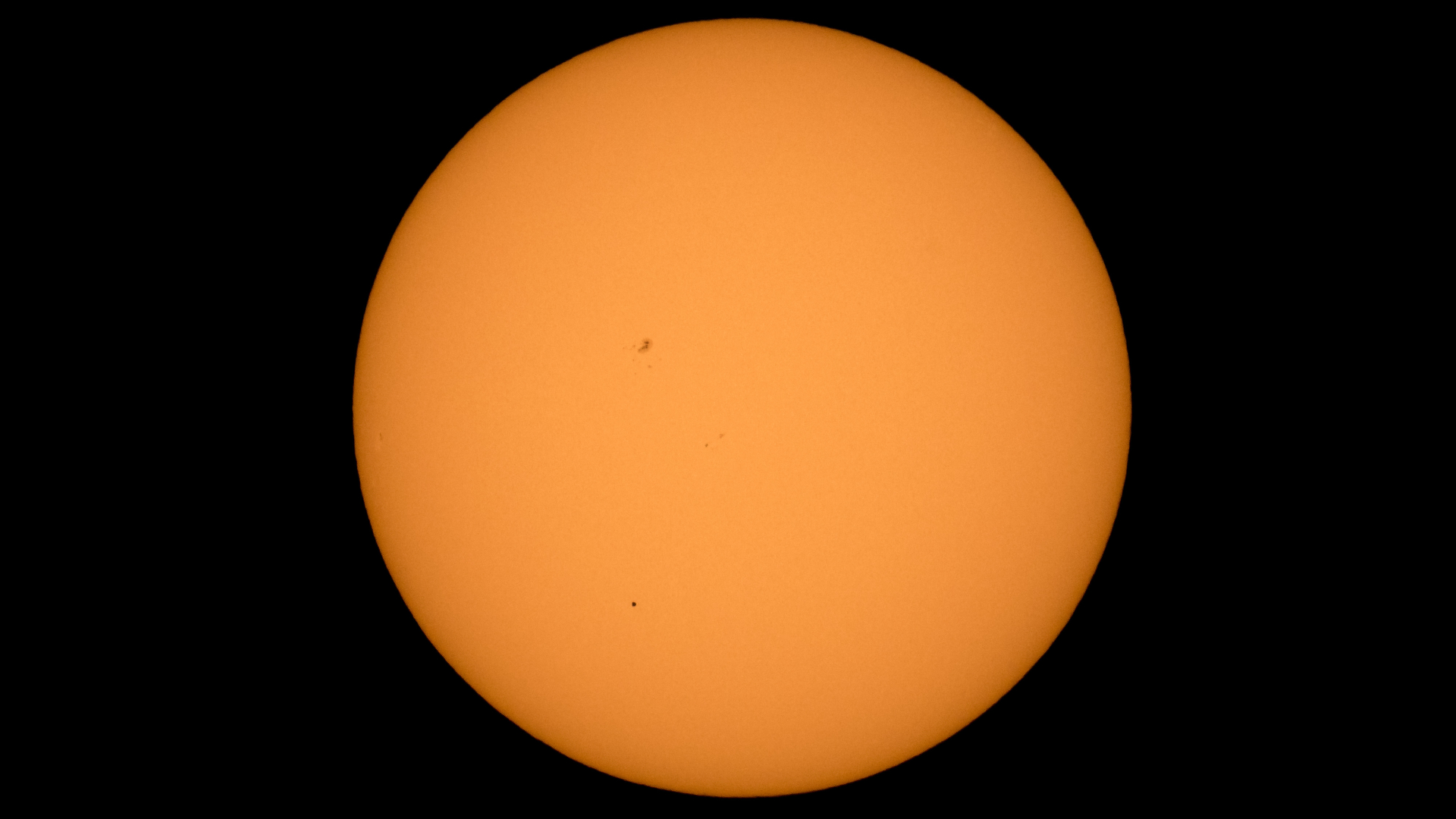
Mercury speeds around the sun every 88 Earth days, hurtling along at nearly 29 miles (47 kilometers) per second — faster than any other planet in the solar system, according to NASA. Mercury's orbit is not only very fast but also highly elliptical. The planet gets as close as 29 million miles (47 million km) to the sun and as far as 42 million miles (70 million km) from the sun.
Surface ice located near poles
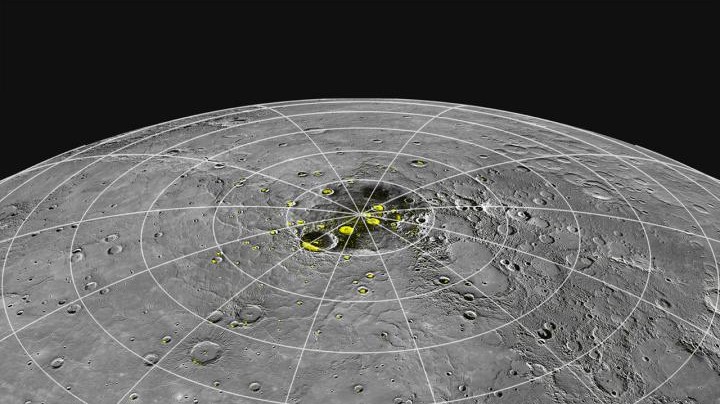
In 2012, NASA's MESSENGER spacecraft discovered water ice inside some of Mercury's craters. In 2017, it was confirmed that Mercury has much more ice strewn across its north polar region than previously thought. The existence of ice had first been suggested in the 1990s when Earth-based telescopes detected highly reflective spots in the polar regions.
Being so close to the sun, you might find it strange that Mercury could harbor any surface ice at all. But the planet has very little axial tilt, meaning that the polar regions receive very little direct sunlight, and some craters remain constantly in the dark. And Mercury has no atmosphere to speak of, so its temperatures rise and fall dramatically during the day and night, respectively.
Enormous iron core
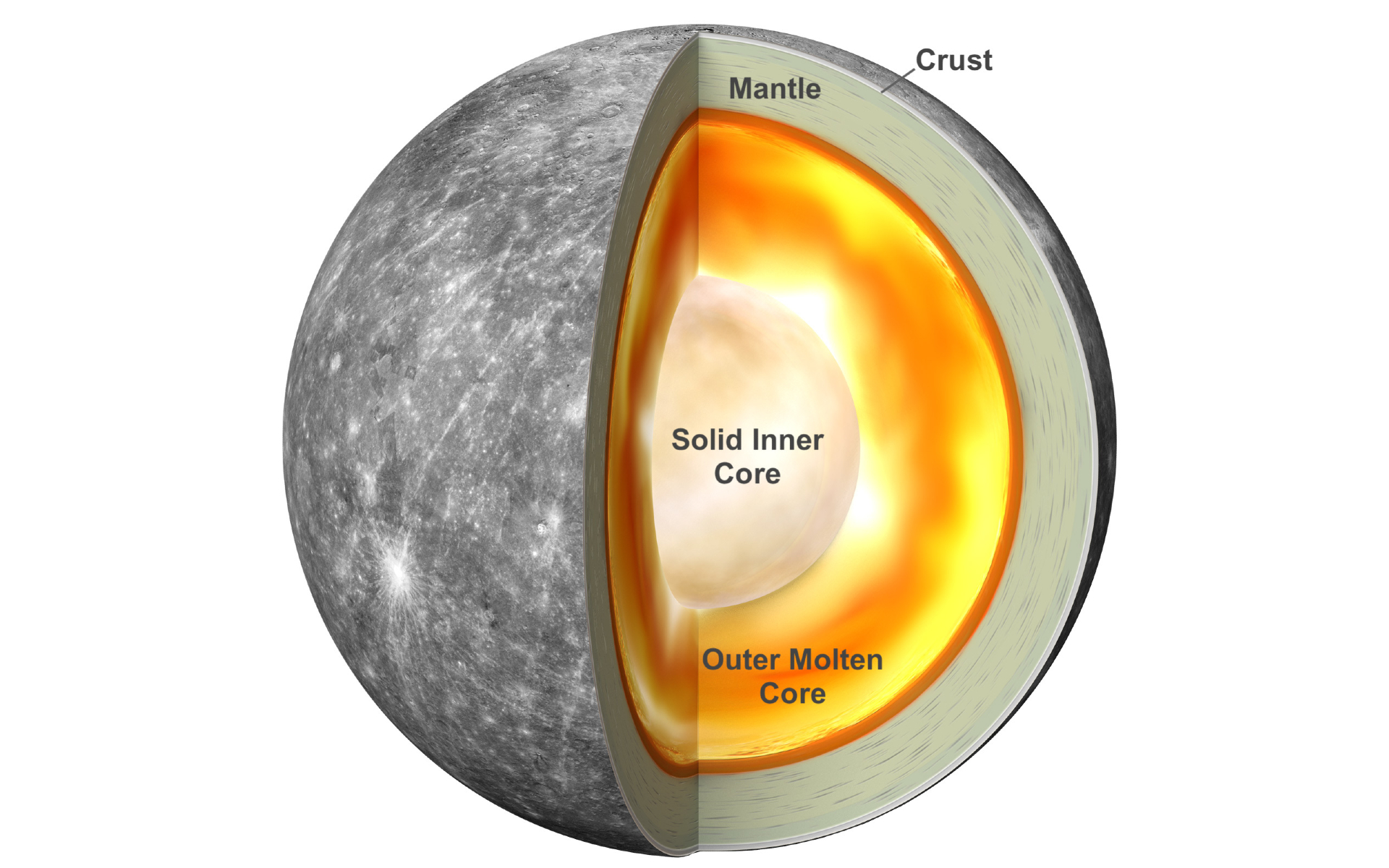
Mercury has a huge metallic core approximately 2,200 miles to 2,400 miles (3,600 to 3,800 km) wide — about 75% of the planet's diameter! To put things into perspective, Mercury's outer shell is only 300 miles to 400 miles (500 to 600 km) thick.
The huge core has more iron in it than any other planet in the solar system. Scientists aren't exactly sure how it formed, or why it's so outlandishly large.
Its entire surface has been mapped
NASA's MESSENGER probe (short for Mercury Surface, Space Environment, Geochemistry, and Ranging mission), orbited Mercury for more than four years and beamed back some amazing images of the closest planet to the sun. Scientists used those images to create the first-ever complete map of Mercury's surface.
The thinnest atmosphere in the solar system
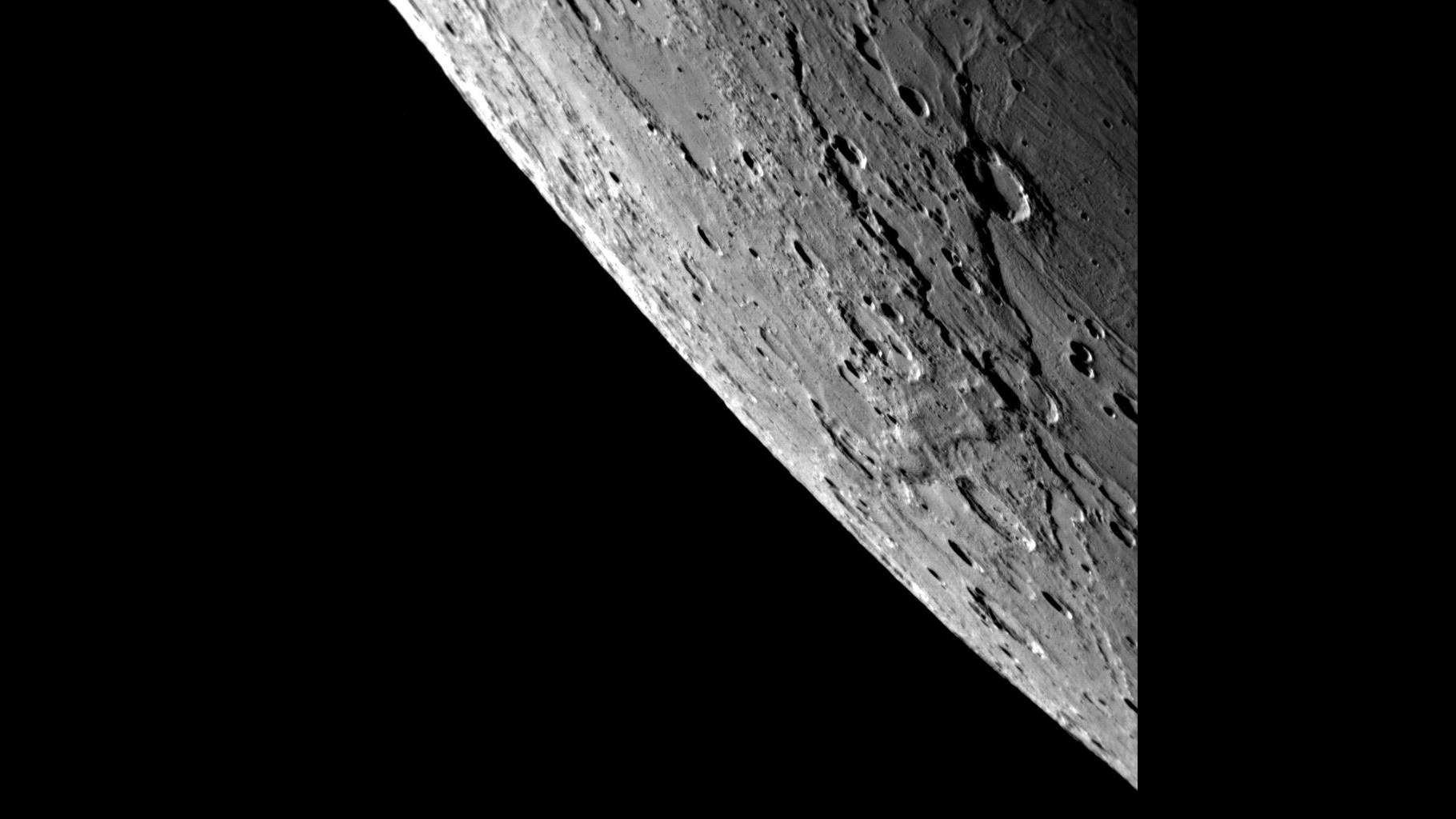
Mercury has the thinnest atmosphere of any planet in the solar system. The atmosphere is so thin that scientists have another name for it — an exosphere. Mercury's exosphere is composed mostly of oxygen, sodium, hydrogen, helium and potassium, according to NASA.
Weird 'tails'
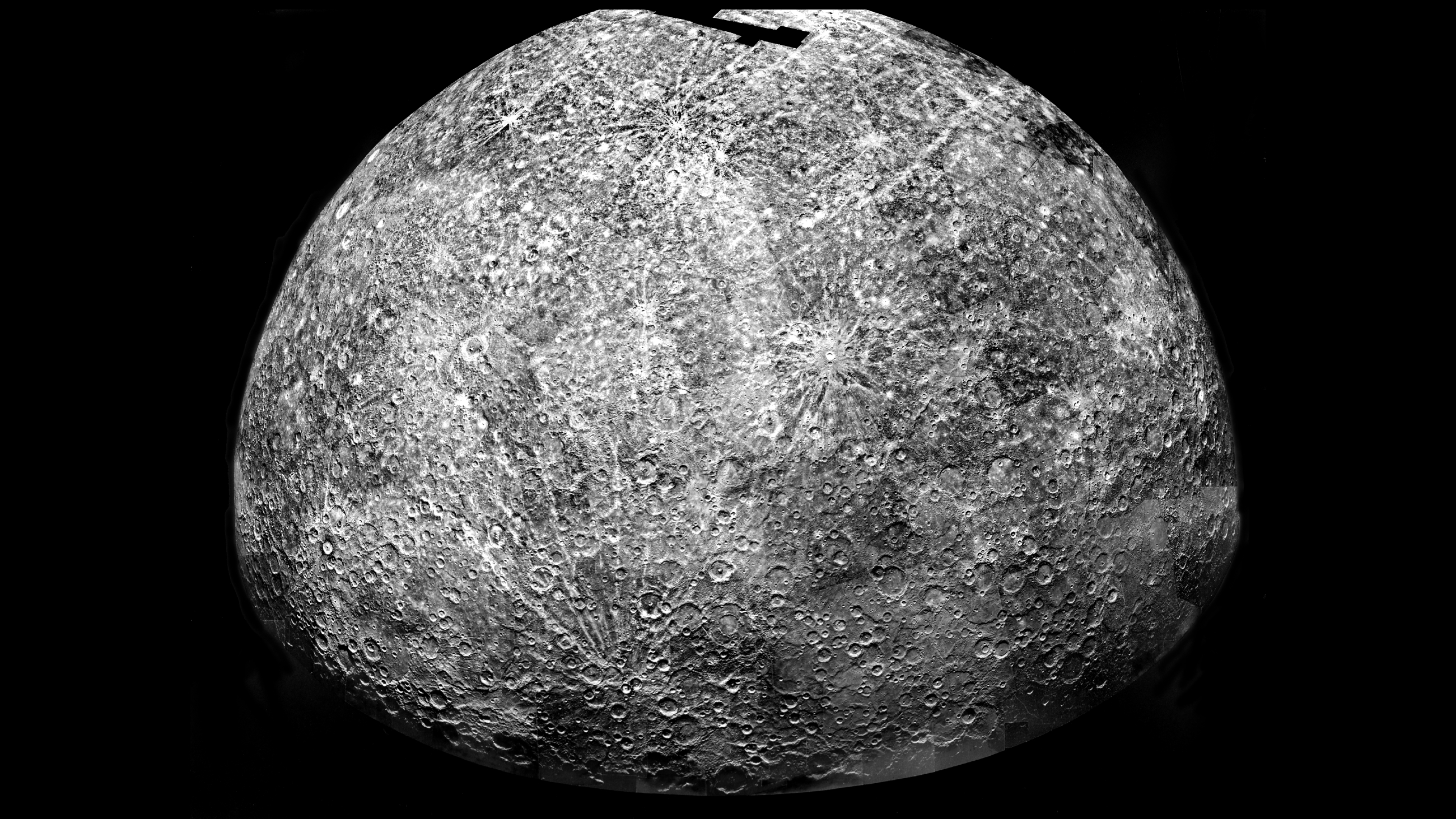
Scientists have discovered that Mercury has streams of particles sloughing off its surface, much like a comet. Long-exposure photographs taken by astrophotographers on Earth can capture these curious tails, as detailed in an article from EarthSky.
Scientists believe that the tails are produced when the sodium in Mercury's exosphere glows as a result of being excited by light from the sun. Sunlight can also free these molecules from Mercury's surface and push them away into space, according to an article from NASA Science.
Magnetic tornadoes
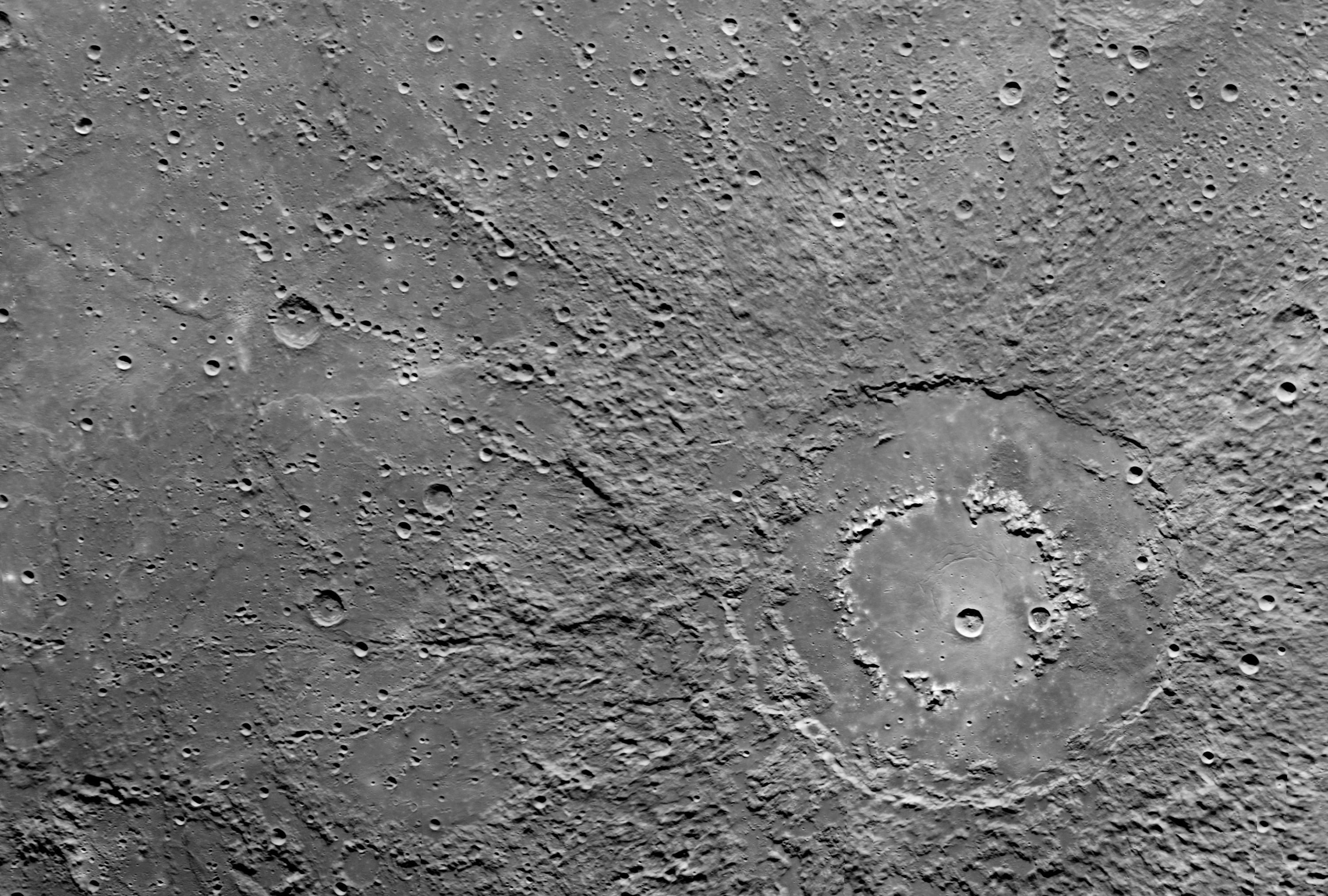
Scientists are puzzled by Mercury's magnetic field; the planet appears to be too small to host a global magnetic field, yet it does. Though the magnetic field has only 1% the strength of Earth's, it can cause quite the commotion on the surface of Mercury in the form of magnetic tornadoes.
According to NASA, when Mercury's magnetic field interacts with the solar wind, it sometimes generates magnetic tornadoes that channel fast, hot, solar wind plasma to the surface of the little planet. When the solar wind plasma hits the surface, it displaces neutrally charged atoms on the surface, sending the loops high into Mercury's atmosphere.
Join our Space Forums to keep talking space on the latest missions, night sky and more! And if you have a news tip, correction or comment, let us know at: community@space.com.
Get the Space.com Newsletter
Breaking space news, the latest updates on rocket launches, skywatching events and more!

Daisy Dobrijevic joined Space.com in February 2022 having previously worked for our sister publication All About Space magazine as a staff writer. Before joining us, Daisy completed an editorial internship with the BBC Sky at Night Magazine and worked at the National Space Centre in Leicester, U.K., where she enjoyed communicating space science to the public. In 2021, Daisy completed a PhD in plant physiology and also holds a Master's in Environmental Science, she is currently based in Nottingham, U.K. Daisy is passionate about all things space, with a penchant for solar activity and space weather. She has a strong interest in astrotourism and loves nothing more than a good northern lights chase!
